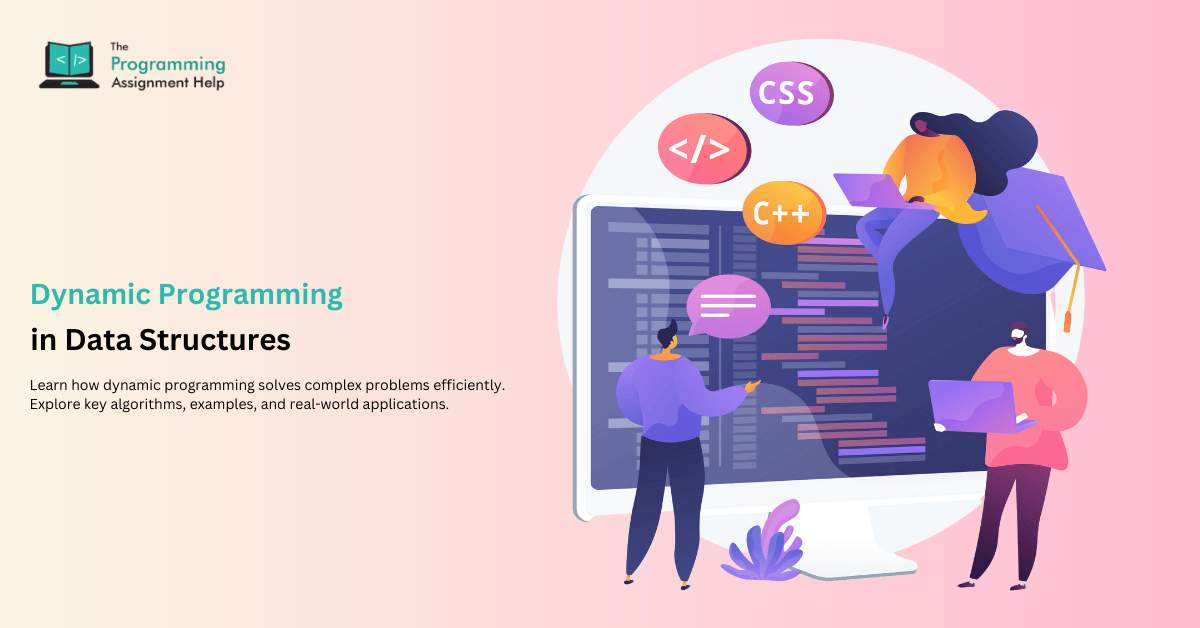
- 19th Sep 2025
- 19:02 pm
- Admin
Dynamic Programming (DP) is a powerful algorithmic technique used to solve complex problems by breaking them into simpler overlapping subproblems and storing their solutions to avoid redundant computations. It is commonly used in optimization problems, resource allocation and in computer science applications where efficiency is an important concern.
What is Dynamic Programming?
Dynamic Programming is a problem solving method, in which solutions to one problem are obtained by integrating solutions to smaller problems and storing the answer to avoid repetition.
- Ideal for problems with overlapping subproblems.
- Stores intermediate results using memoization or tabulation.
- Ensures efficient and optimized computation for large datasets.
Key Characteristics of Dynamic Programming
Dynamic Programming problems share certain defining traits that make them suitable for this approach.
- Optimal Substructure: Global solution can be built based on solutions of subproblems.
- Overlapping Subproblems: The same subproblems are solved several times.
- Memoization: Redundant computations can be prevented by storing subproblem result.
- Tabulation: Iteratively filling a table to solve subproblems bottom-up.
Popular Dynamic Programming Algorithms
Dynamic Programming is used in a number of classic algorithms that solve efficiently optimization and computational problems by trying to divide the problem into overlapping subproblems.
Fibonacci Sequence
A classic problem demonstrating overlapping subproblems.
- Calculate the nth Fibonacci number efficiently.
- Avoids exponential recursion by storing previous results.
- Time Complexity: O(n) with DP vs O(2^n) for naive recursion.
0/1 Knapsack Problem
Solves optimization problem of maximizing profit with limited capacity.
- Each item can either be included or excluded.
- Uses a DP table to track maximum profit at each weight limit.
- Time Complexity: O(n * W), where n = items, W = capacity.
Longest Common Subsequence (LCS)
Finds the longest sequence present in both sequences.
- DP table tracks common subsequences for all index pairs.
- Builds solution from smaller overlapping subsequences.
- Useful in file comparison and DNA sequence analysis.
Matrix Chain Multiplication
Optimizes order of multiplying matrices to minimize total multiplications.
- Break problem into smaller subchains of matrices.
- Compute minimal cost using DP table.
- Reduces computational complexity significantly.
Coin Change Problem
Finds the minimum number of coins to make a given amount.
- Uses DP table to track minimum coins needed for each value.
- Supports unlimited coin usage if allowed.
- Time Complexity: O(n * amount).
Applications of Dynamic Programming
DP is widely used in both theoretical and practical computing applications.
- Optimization Problems: Knapsack, resource allocation, shortest paths.
- Bioinformatics: DNA and protein sequence alignment (LCS).
- Computer Networks: Routing and bandwidth optimization.
- Finance: Portfolio optimization and investment planning.
- Operations Research: Scheduling and inventory management.
Advantages of Dynamic Programming
Dynamic Programming offers various advantages in the solving of complex problems.
- Reduces Redundancy: Avoids recomputation of subproblems.
- Efficient Computation: Converts exponential-time problems to polynomial-time solutions.
- Structured Approach: Promotes a systematized approach of optimization problems.
- Practical Applications: Applied to numerous algorithms, networks and bioinformatics.
Limitations of Dynamic Programming
Despite its efficiency, DP has some limitations that need consideration.
- Memory Usage: Requires additional storage for tables or memoization.
- Complexity: Setting up DP solution may be tricky for beginners.
- Not Always Intuitive: Requires careful analysis of subproblem structure.
- Problem-Specific: Only useful for problems with overlapping subproblems and optimal substructure.
Conclusion
Dynamic Programming is an essential data structures and algorithms technique of solving optimization and complex problems. Starting with resource allocation to sequence analysis, DP offers a systematic method of attaining optimal solutions with minimum redundant computations.
For students looking to strengthen their understanding or get help with practical problem-solving, our Data Structure Assignment Help service offers expert guidance, step-by-step explanations, and detailed solutions tailored to academic assignments.








